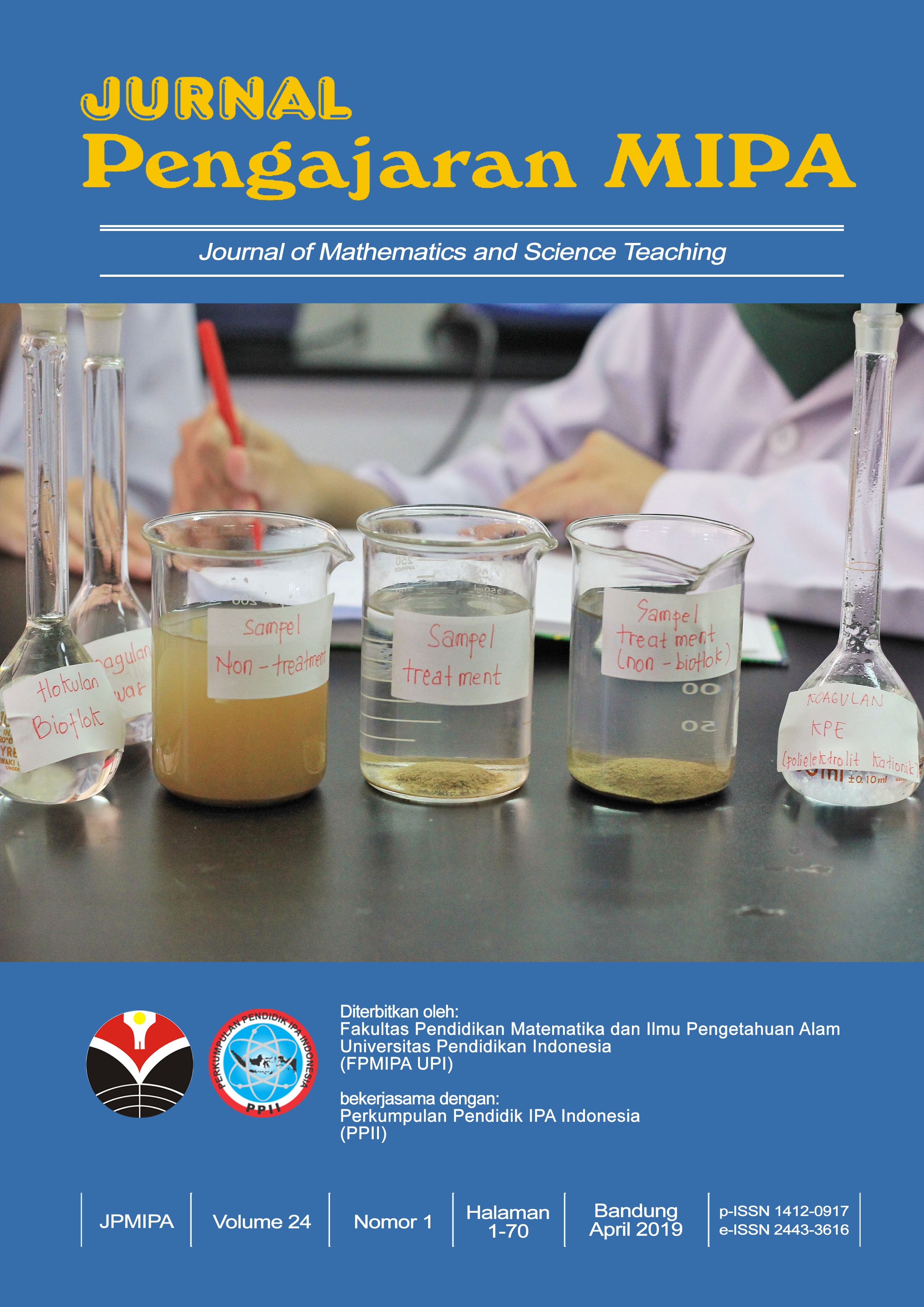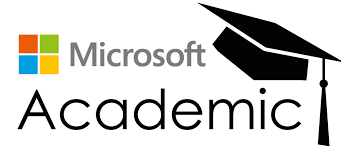Students' Mathematical Reasoning Ability with Open-Ended Problems in Mathematics Learning
Abstract
Keywords
References
Abdullah, N. A., & Leung, F. K. S. (2019). Exploring Teachers’ Values and Valuing Process in School-Based Lesson Study: A Brunei Darussalam Case Study. https://doi.org/10.1007/978-3-030-16892-6_9
Becker, J. P. (n.d.). The Open-Ended Approach : A New Proposal for Teaching Mathematics Edited by.
Benson-O’Connor, C. D., McDaniel, C., & Carr, J. (2019). Bringing Math to Life: Provide Students Opportunities to Connect their Lives to Math. Networks: An Online Journal for Teacher Research, 21(2). https://doi.org/10.4148/2470-6353.1299
Bingölbali, E., & Bingölbali, F. (2021). An Examination of Open-Ended Mathematics Questions’ Affordances. International Journal of Progressive Education, 17(4), 1–16. https://doi.org/10.29329/ijpe.2021.366.1
Dewi, N. S., & Juandi, D. (2017). Pengaruh Pendekatan Open-Ended Terhadap Kemampuan Berpikir Kreatif Matematis Mahasiswa Pgsd. Symmetry: Pasundan Journal of Research in Mathematics Learning and Education, 6(3), 1135–1150. https://doi.org/10.23969/symmetry.v2i1.381
Fatah, A., Suryadi, D., Sabandar, J., & Turmudi. (2016). Open-ended approach: An effort in cultivating students’ mathematical creative thinking ability and self-esteem in mathematics. Journal on Mathematics Education, 7(1), 9–18. https://doi.org/10.22342/jme.7.1.2813.9-18
Jupri, A., & Drijvers, P. (2016). Student difficulties in mathematizing word problems in Algebra. Eurasia Journal of Mathematics, Science and Technology Education, 12(9), 2481–2502. https://doi.org/10.12973/eurasia.2016.1299a
Kartikasari, I. A., Usodo, B., & Riyadi. (2022). The Effectiveness Open-Ended learning and Creative Problem Solving Models to Teach Creative Thinking Skills. Pegem Egitim ve Ogretim Dergisi, 12(4), 29–38. https://doi.org/10.47750/pegegog.12.04.04
Kwon, O. N., Park, J. S., & Park, J. H. (2006). Cultivating divergent thinking in mathematics through an open-ended approach. Asia Pacific Education Review, 7(1), 51–61. https://doi.org/10.1007/BF03036784
Leikin, R., Klein, S., & Waisman, I. (2023). To What Extent Are Open Problems Open? Interplay Between Problem Context and Structure (pp. 49–69). https://doi.org/10.1007/978-3-031-35459-5_3
Marla A, S. (n.d.). Mathe matics.
Munroe, L. (2015). The Open-Ended Approach Framework. European Journal of Educational Research, volume-5-2(volume4-issuse3.html), 97–104. https://doi.org/10.12973/eu-jer.4.3.97
Mursidik, E. M., Nusantara, T., As’ari Rahman, A., & Muksar, M. (2024). Self-regulated learning profile of students with auditory learning style in mathematics lessons. 14(November 2023), 1–13.
Nasution, M. (2013). To enhance the learning of mathematics , teachers should be able to deliver lessons well so that students easily understand and full of enthusiasm in learning . A teacher must have the ability to create a learning activity towards achieving optimal learni. Jurnal Forum Pedagogik, 05(01), 81–95.
Oostveen - de Vink, I., Willemsen, R., Lazonder, A., & Kroesbergen, E. (2021). Creativity in mathematics performance: The role of divergent and convergent thinking. British Journal of Educational Psychology, 92. https://doi.org/10.1111/bjep.12459
Rahayu, W., Sulaeman, E., Arnawisuda Ningsi, B., Arofah, I., & Akbari, W. (2023). Analisis kemampuan pemahaman guru sekolah dasar dalam mengembangkan butir soal berbasis literasi numerik. PERDULI: Jurnal Pengabdian Kepada Masyarakat, 4(01), 10–18. https://doi.org/10.21009/perduli.v4i01.30490
Rhosyida, N., Trisniawati, T., & Putrianti, F. (2019). Open Ended Approach: An Exploration of CriticalThinking Skill. https://doi.org/10.4108/eai.19-10-2018.2282165
Rosita, N. T., Kartasasmita, B. G., & Dahlan, J. A. (2014). Sigma Didaktika. JUrnal Pendidikan Matematika, 3(1), 12–16.
Sari, A. N., Wahyuni, R., & Rosmaiyadi, R. (2016). Penerapan Pendekatan Open-Ended untuk Meningkatkan Kemampuan Berpikir Kritis Siswa Pada Materi Aljabar Kelas VIII SMP Negeri 10 Pemangkat. JPMI (Jurnal Pendidikan Matematika Indonesia), 1(1), 20. https://doi.org/10.26737/jpmi.v1i1.78
Septiani, S., Retnawati, H., & Arliani, E. (2022). Designing Closed-Ended Questions into Open-Ended Questions to Support Student’s Creative Thinking Skills and Mathematical Communication Skills. JTAM (Jurnal Teori Dan Aplikasi Matematika), 6(3), 616. https://doi.org/10.31764/jtam.v6i3.8517
Sibuea, S. A., Nur, L., & Siregar, K. (2024). Pengaruh Pendekatan Open-Ended terhadap Penalaran Matematis Siswa Pada Materi Bilangan Bulat Kelas V Sekolah Dasar Pendahuluan. 13(3), 2963–2976.
Syaeruldinata, A., As’ari, A., & Abadyo, A. (2019). Menumbuhkan Keterampilan Berpikir Tingkat Tinggi melalui Open Ended Problem. Jurnal Pendidikan: Teori, Penelitian, Dan Pengembangan, 4, 1008. https://doi.org/10.17977/jptpp.v4i8.12658
Syahrudi, S. (2019). Efektivitas Pendekatan Open Ended Dalam Pembelajaran Matematika. EDUMAT : Jurnal Edukasi Matematika, 10(1), 1081–1085. https://doi.org/10.53717/edumat.v10i1.95
Varveris, D., Saltas, V., & Tsiantos, V. (2023). Exploring the Role of Metacognition in Measuring Students’ Critical Thinking and Knowledge in Mathematics: A Comparative Study of Regression and Neural Networks. Knowledge, 3(3), 333–348. https://doi.org/10.3390/knowledge3030023
Wahyu Lestari, Fatinatus Selvia, & Rohmatul Layliyyah. (2019). Pendekatan Open-ended Terhadap Kemampuan Metakognitif Siswa. At- Ta’lim : Jurnal Pendidikan, 5(2), 184–197. https://doi.org/10.36835/attalim.v5i2.263
Zosh, J. M., Hassinger-Das, B., Toub, T. S., Hirsh-Pasek, K., & Golinkoff, R. M. (2016). Mathe matics. Journal of Mathematics Education, 7(1), 45–49. https://www.researchgate.net/profile/Mailizar_Mailizar/publication/275967933_HOW_EQUALITY_AND_INEQUALITY_OF_WHOLE_NUMBERS_ARE_INTRODUCED_IN_CHINA_INDONESIA_AND_SAUDI_ARABIAPRIMARY_SCHOOL_TEXTBOOKS/links/554c9d7e0cf29752ee7f1fa6.pdf#page=314
DOI: https://doi.org/10.18269/jpmipa.v30i1.80471
Refbacks
Copyright (c) 2025 Universitas Pendidikan Indonesia (UPI)

This work is licensed under a Creative Commons Attribution-ShareAlike 4.0 International License.
JPMIPA http://ejournal.upi.edu/index.php/jpmipa/index is licensed under a Creative Commons Attribution-ShareAlike 4.0 International License
Jurnal Pengajaran Matematika dan Ilmu Pengetahuan Alam (JPMIPA) or Journal of Mathematics and Science Teaching
All rights reserverd. pISSN 1412-0917 eISSN 2443-3616
Copyright © Faculty of Mathematics and Science Education (FPMIPA) Universitas Pendidikan Indonesia (UPI)
View JPMIPA Stats









